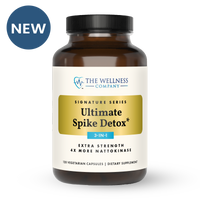From Frail to Fit: The Science of Building Muscle

Frailty and sarcopenia (age-related muscle loss) are significant health risks as we age. The rate of decline in muscle mass varies from person to person, but on average, people lose about 1-2% of muscle mass per year after the age of 30. This may not sound like much, but over decades, this effect compounds, leading to huge reductions in muscle size, strength, and functional independence. By the age of 70, the average person will have lost a whopping 30% of their muscle mass.
For decades, we’ve known that the longest lever to combat sarcopenia is strength training. But precisely how much training is enough to stop the decline? How many sets and reps are needed to get the best results? Are heavier or lighter weights superior? In today’s article, we’ll cut through the confusion and lay out both the optimally and minimally effective protocols you can leverage to not only preserve but build muscle mass as you age.
Many Roads Lead to Rome
When it comes to weight training, many gym-goers are initially fed the classic advice: perform low repetitions with high weight to build strength (1-5), perform medium repetitions with moderate weight (8-12) for muscle size (hypertrophy), and perform high repetitions with light weight (15-30) for endurance. But this classical wisdom hasn’t been borne out in the research. According to a study by Brad Schoenfeld and colleagues, the story is a bit more complex.
In 2013, Schoenfeld’s research group found that for the specific goal of muscle growth, similar results can be achieved across a wide spectrum of rep ranges. Anywhere from about five to 30 repetitions can trigger a similar degree of muscle growth, as long as the intensity of effort is equated. In other words, whether you're lifting heavy weights for fewer reps or lighter weights for more reps, as long as you're doing the same number of hard sets (getting near fatigue by the end), you’re likely to see similar growth in muscle size.
If your goal is muscle gain, this is great news, because it means you’ve got plenty of options. If you prefer lighter weights, only have access to light weights, or can't lift heavy due to injuries, you can still build serious muscle. But if you prefer heavier weights and lower repetitions, that works too (and seems to be better for other things, like bone density).
The Minimal Effective Dose for Muscle Growth
There’s a big difference between an optimal training program – one a bodybuilder would do to compete on-stage, for example – and a minimally effective training program – one your average person might use to slow the rate of sarcopenia. According to the latest research, an optimal muscle building program should entail about 10-20 hard sets per muscle group, per week. That could all be done in one session or (more commonly) spread across multiple training days. On the other hand, to simply stimulate greater than zero hypertrophy, a minimally effective training program requires about four sets per muscle, per week.
This is really encouraging data for those who are short on time, or who aren’t fond of the gym in general. Even as little as four hard sets per week, which should only take a matter of minutes, is enough to preserve muscle mass.
Intensity Matters
Earlier in this article, we mentioned that as long as the number of hard sets is equated, rep ranges don’t matter all that much when it comes to building muscle. You might be asking the question: how hard should a hard set be? Well, the research seems quite clear that you don’t need to go to absolute failure on every set. In other words, you can leave a little bit of juice in the tank at the end of your sets and still get great results. You should, however, have no more than three to four reps "in the tank" at the end of each set. Any more than that, and you’re not stimulating the muscle quite enough to force it to adapt and grow.
Bottomline
What does this all mean for your workout routine? If your goal is to build muscle, there are many ways to do it. You can lift heavy, go light, or mix it up. As long as you're working hard, you’ll see results. If you’re able to consistently perform more than a few sets per week for a given muscle group, you’re likely to see improvement. Of course, as you gain more training experience, the gains will be harder to come by.
It’s easy to get lost in the weeds on topics like this, but it’s important to remember that for beginners, the most crucial thing is to find a routine that you enjoy and can stick with. When it comes to weight training, a modest, sustainable routine performed consistently over years is far and away better than the perfect but unsustainable routine that you give up on after a month.
Video: Dr. Brad Schoenfeld discusses optimal vs minimum effective dose for hypertrophy
References
Keller, K., & Engelhardt, M. (2013). Strength and muscle mass loss with aging process. Age and strength loss. Muscles, ligaments and tendons journal, 3(4), 346.
Schoenfeld, B.J.; Grgic, J.; Ogborn, D.; Krieger, J.W. Strength and Hypertrophy Adaptations Between Low- vs. High-Load Resistance Training: A Systematic Review and Meta-analysis. J Strength Cond Res 2017, 31, 3508–3523.
Schoenfeld, B.J.; Peterson, M.D.; Ogborn, D.; Contreras, B.; Sonmez, G.T. Effects of Low- vs. High-Load Resistance Training on Muscle Strength and Hypertrophy in Well-Trained Men. J Strength Cond Res 2015, 29, 2954–2963.
Iversen, V. M., Norum, M., Schoenfeld, B. J., & Fimland, M. S. (2021). No time to lift? Designing time-efficient training programs for strength and hypertrophy: a narrative review. Sports Medicine, 51(10), 2079-2095.
Helms E.R., Byrnes R.K., Cooke D.M., Haischer M.H., Carzoli J.P., Johnson T.K., Cross M.R., Cronin J.B., Storey A.G., Zourdos M.C. RPE vs. Percentage 1RM Loading in Periodized Programs Matched for Sets and Repetitions. Front. Physiol. 2018;9:247. doi: 10.3389/fphys.2018.00247.














